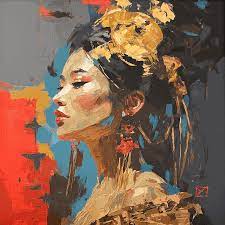Ceıvır is more than just an art form; it’s a vibrant expression of culture that tells stories passed down through generations. Rooted in rich traditions, Ceıvır captures the essence of communities and their histories. This unique craft combines creativity with deep symbolism, making each piece not only visually stunning but also filled with meaning. As we delve into the world of Ceıvır, you’ll discover its fascinating origins, the intricate techniques behind its creation, and how this art form continues to evolve today. Join us on this journey to explore what makes Ceıvır a vital part of cultural heritage around the globe.
History and Origins of Ceıvır
Ceıvır traces its roots back centuries, emerging from the rich tapestry of cultural expressions in its region. It is believed to have originated within communities seeking to connect through visual storytelling.
The art form reflects a blend of historical influences, drawing from various traditions that shaped its evolution. Artisans used techniques passed down through generations, ensuring that each piece carries a unique narrative.
As Ceıvır developed, it became a medium for personal and communal expression. Each stroke or color choice encapsulated emotions and experiences relevant to the culture at large.
Local materials played a significant role in shaping Ceıvır’s identity. The natural landscape provided both inspiration and resources for artisans who sought to create something meaningful.
This heritage continues to be celebrated today, with many artists embracing their ancestral lineage while pushing creative boundaries forward.
The Symbolism and Meaning in Ceıvır Art
Ceıvır art is rich with symbolism, reflecting the cultural beliefs and traditions of its creators. Each piece tells a story, often rooted in local legends or societal values.
Common motifs include nature elements like trees and animals. These symbols represent growth, harmony, and interconnectedness with the environment. Artists infuse their work with messages about balance and respect for nature.
Colors also play a crucial role in conveying meaning. Bright hues may symbolize joy or celebration, while darker tones can express sorrow or hardship. This color choice adds depth to each artwork.
Additionally, Ceıvır serves as a medium for social commentary. Artists use it to highlight issues such as identity struggles or community resilience, making each artwork not just aesthetically pleasing but thought-provoking too.
Through intricate patterns and designs, viewers are invited into a world where every detail has significance—rooted deeply in history yet resonating today.
Traditional Techniques and Materials Used in Ceıvır
Ceıvır is a captivating art form rooted in tradition. The techniques used are often passed down through generations, ensuring the authenticity of each piece.
Artists typically employ natural materials. These include clay, wood, and textiles sourced from local environments. Each element carries its own significance and story.
Handcrafting remains central to Ceıvır. Skilled artisans utilize tools that have been refined over decades. Whether it’s carving intricate designs or weaving delicate patterns, precision is key.
Color plays an essential role as well. Natural dyes derived from plants enhance the artwork’s visual appeal while connecting it to nature’s palette.
These traditional methods not only celebrate craftsmanship but also reflect cultural narratives embedded within each creation. They serve as a testament to the artistry that thrives even in contemporary contexts, bridging past and present seamlessly.
Modern Adaptations of Ceıvır
Modern adaptations of Ceıvır have emerged as artists embrace contemporary themes while honoring traditional techniques. This fusion breathes new life into the art form, making it relevant for today’s audiences.
Artists experiment with various mediums, incorporating digital tools alongside classic methods. This blend attracts younger generations and expands the reach of Ceıvır beyond its cultural roots.
Exhibitions now showcase vibrant pieces that reflect current societal issues, merging personal stories with age-old symbolism. These works prompt dialogue and encourage viewers to engage deeply with their meaning.
Collaborations between traditional artisans and modern designers are becoming more common. Together, they push boundaries while respecting heritage, creating a dynamic interplay of past and present in each piece.
Social media platforms play a pivotal role too. Artists share their work online, fostering community engagement and inspiring others to explore this unique art form creatively.
Impact on Society and Preservation Efforts
Ceıvır holds a mirror to society, reflecting cultural identity and heritage. Its intricate designs tell stories that trace back generations.
As globalization threatens traditional art forms, efforts to preserve Ceıvır have gained momentum. Communities are rallying together, hosting workshops and exhibitions to keep this art alive.
Various organizations focus on educating younger generations about the significance of Ceıvır. They aim to instill pride in their cultural roots while promoting creativity.
Social media has also played a pivotal role in raising awareness. Artists share their work online, reaching audiences far beyond local borders.
Additionally, collaborations between artisans and modern designers have breathed new life into Ceıvır. This fusion helps maintain relevance while honoring tradition.
Through these initiatives, Ceıvır continues to thrive as both an art form and a vital link to the past. It encourages dialogue around culture and innovation within society.
Conclusion: The Importance of Preserving Cultural Art Forms
Cultural art forms like Ceıvır hold immense significance in shaping identities and communities. They narrate stories of heritage, traditions, and values that have been passed down through generations. Preserving such art is not just about maintaining aesthetic beauty; it’s about honoring the past while enriching the future.
Efforts to keep Ceıvır alive are crucial. These efforts ensure that younger generations can connect with their cultural roots. By engaging with this beautiful form of expression, they learn to appreciate the complexities and skills involved in its creation. This fosters a sense of pride within communities.
Moreover, as we embrace globalization, unique cultural expressions may face dilution or disappearance. Protecting Ceıvır helps maintain diversity in our world’s artistic landscape. It encourages dialogue between cultures and promotes understanding among different peoples.
In supporting initiatives aimed at preserving Ceıvır, we contribute to a shared human experience that celebrates creativity and history alike. Embracing these traditions allows us all to be part of something larger than ourselves—a tapestry woven from countless threads of human expression that transcends borders and time periods.

